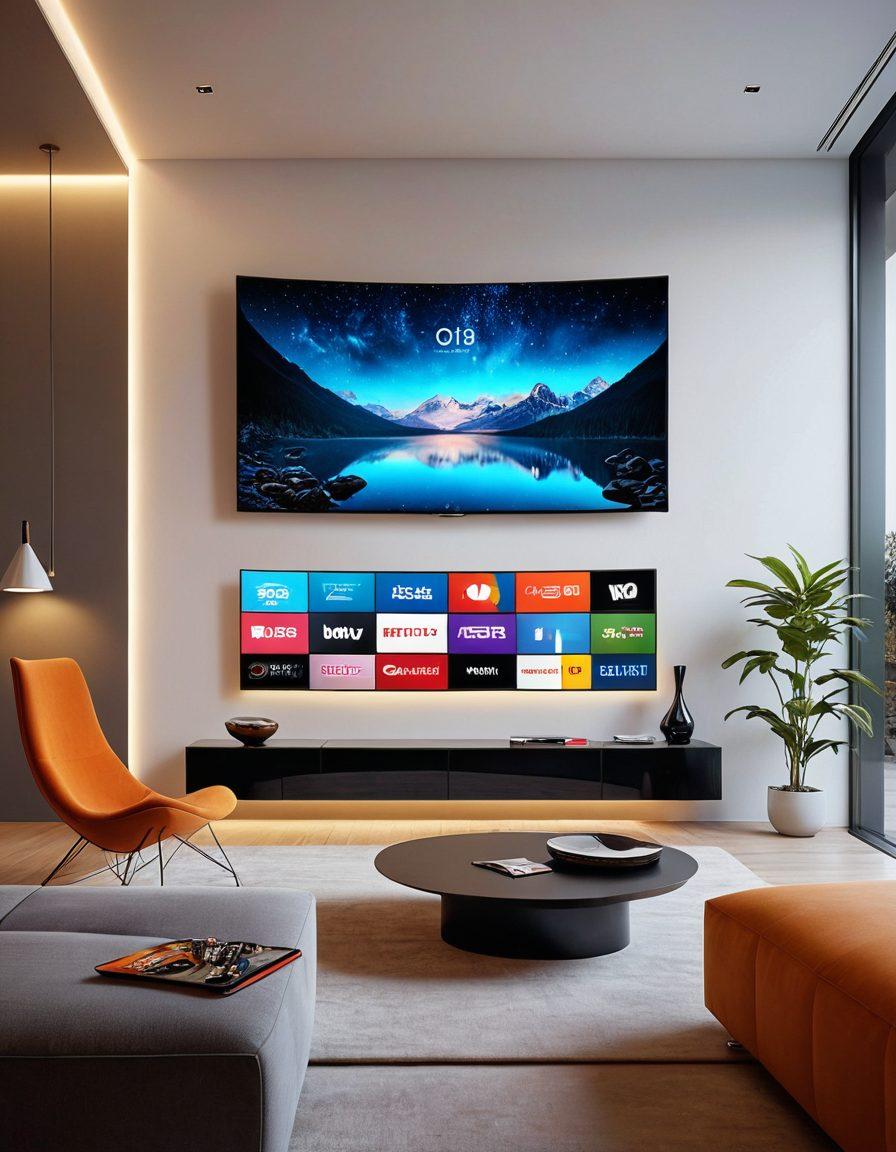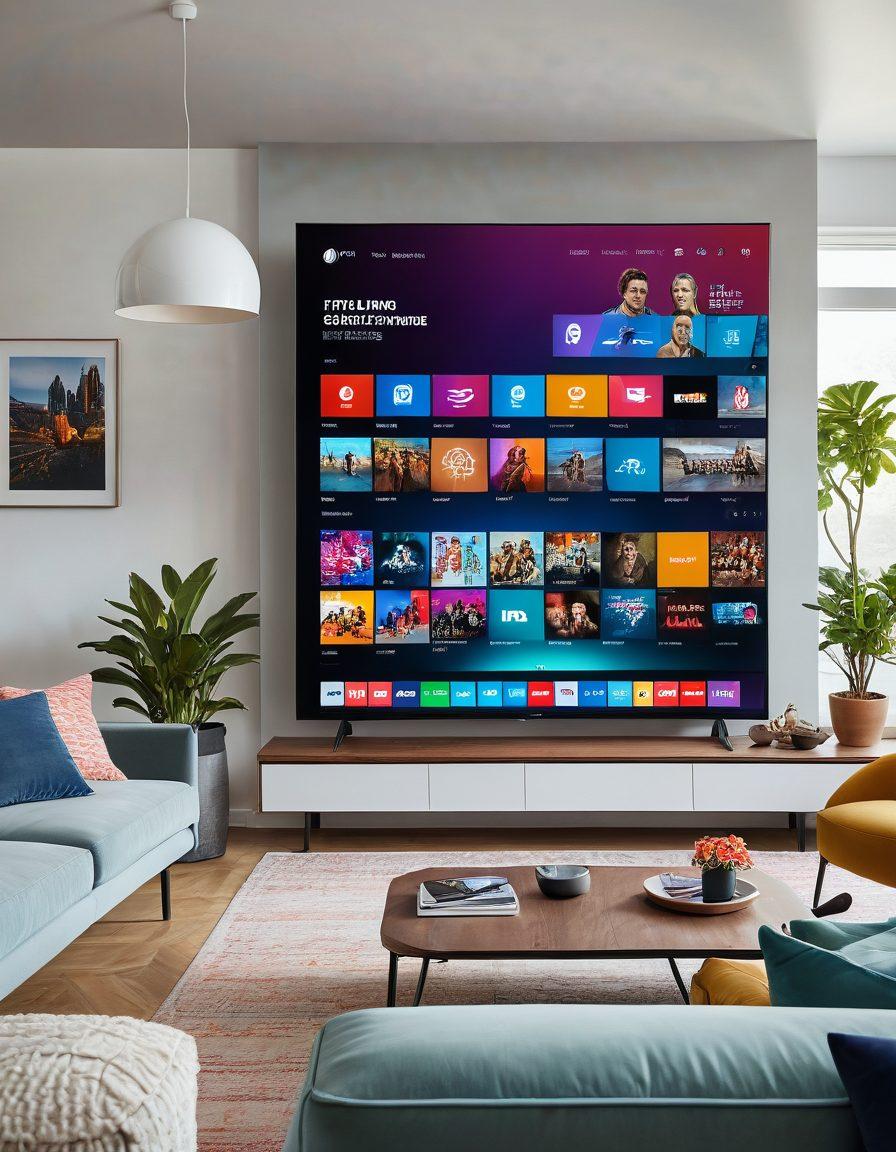The Future of Online TV: Exploring Live Streaming and Video on Demand
Imagine turning on your television and being instantly connected to a live concert happening halfway across the globe or a news briefing occurring in real-time at a vibrant political rally. This is no longer a vision of the future but our present reality. Welcome to the live streaming revolution, a transformative shift in the entertainment industry leveraging the power of the web and the internet. This paradigm shift in how we consume media is reshaping our television habits, making real-time broadcasting an exhilarating aspect of modern-day entertainment.
Live streaming has revolutionized the way we engage with media and visual content. Whether it's sports events, concerts, or webcasts from significant political events, real-time streaming has opened up a world of possibilities. Unlike traditional television where programs are broadcast on a fixed schedule, live streaming enables internet TV to deliver content as it happens, ensuring viewers do not miss any crucial moment. This aspect of immediate gratification is a powerful driver for online broadcasts, making live online TV an indispensable part of our daily lives.
One of the most remarkable aspects of live streaming is its ability to make entertainment more interactive. No longer are audiences passive recipients of telecasting; now they can participate, comment, and influence the flow of events in real-time. Platforms offering streaming services have integrated social media elements to enhance interaction—a shift that creates a more engaging and dynamic experience for viewers. Questions like, 'Will interactive TV become the new norm for content delivery?' highlight the evolving landscape and the potential for even more exciting developments in multimedia and digital broadcasts.
The rise of OTT (over-the-top) services has also fueled the growth of live streaming and video on demand (VOD). As traditional TV networks struggle to retain viewers, more people are gravitating towards the convenience of online and internet TV, where they can control what and when to watch. This move towards on-demand viewing is causing a seismic shift in broadcasting and telecasting. With platforms like Netflix, Hulu, and Amazon Prime offering extensive libraries of VOD, combined with the real-time allure of live streaming services, the future of entertainment seems promising and diverse. The ease of accessing diverse content anytime, anywhere, tremendously enhances the user experience.
But what makes live streaming truly revolutionary? It's the unparalleled level of amusement and recreation it offers. Be it a spontaneous artist live broadcast or an unplanned AMA (Ask Me Anything) session with a celebrity, real-time content brings with it an element of surprise and authenticity that pre-recorded shows seldom match. As we delve deeper into this era of online broadcasts and webcasts, one can only wonder: How much farther can we push the boundaries of live digital entertainment? The answer lies in continued innovation and the relentless pursuit of more immersive and interactive content delivery methods that keep audiences captivated and coming back for more.
Video on Demand: The Ultimate Solution for Accessible and Personalized Content
Picture this: it's a lazy Sunday afternoon, and you're curled up on your couch, scrolling through your favorite streaming service. Within seconds, a universe of visual content is at your fingertips. This luxury of immediacy and choice is brought to you by video on demand (VOD), a modern marvel reshaping the landscape of online television and entertainment. Video on demand represents the ultimate solution for accessible and personalized content, making it easier than ever to enjoy your favorite shows, movies, and media whenever and wherever you please.
The rise of VOD is intricately tied to the exponential growth of the web and online streaming services. Unlike traditional television broadcasting, which adhered to rigid schedules and limited viewer control, VOD empowers audiences with unprecedented flexibility. Say goodbye to the days of missing an episode of your favorite series because you were stuck in traffic. With VOD, you can watch what you want, when you want. This adaptability extends to the type of content available as well, from blockbuster movies to niche documentaries, appealing to a broad spectrum of tastes and preferences.
What's the secret behind this massive shift towards VOD? It's all about accessibility and personalization. In a world where time is a valuable commodity, the allure of having an entire multimedia library at your command is irresistible. Whether you're looking for amusement, recreation, or serious entertainment, the vast digital library of VOD platforms promises something for everyone. Moreover, these services come equipped with algorithms that learn your viewing habits and suggest content tailored just for you. It’s like having a personal curator who knows precisely whether you're in the mood for a mystery thriller or a heartwarming rom-com.
Imagine the days of relying solely on real-time streaming or live broadcasts dwindling away. Through advanced OTT (over-the-top) streaming technology, VOD has revolutionized content delivery. No longer are you shackled by the limitations of live telecasting; the era of VOD lets you be the master of your viewing schedule. Even major events and programs, traditionally tied to live broadcasts like sports or news, are now often available on-demand shortly after they air. This flexibility extends to a variety of screens, from smartphones and tablets to smart TVs, making VOD an unparalleled choice for the modern viewer.
But it's not just about convenience and variety; the VOD evolution is also reshaping the economic landscape of media and entertainment. Traditional TV networks are scrambling to adapt as cord-cutting trends—the practice of canceling cable subscriptions in favor of internet TV—continue to rise. OTT platforms like Netflix, Amazon Prime, and Disney+ are at the forefront of this revolution, offering monthly subscriptions that grant unlimited access to a wealth of interactive TV and movie options. In this new world of digital broadcasting and web-based media, the shift towards video on demand is nothing short of spectacular, signifying a new golden age of accessible and personalized visual content.
Interactive TV and OTT Services: Redefining the Future of Digital Broadcasting
The landscape of television is undergoing a revolutionary shift, touching on every aspect of our visual entertainment experience. With the advent of interactive TV and OTT (over-the-top) services, the future of digital broadcasting is not just about watching content but dynamically engaging with it. Gone are the days when we were merely passive consumers of media. Now, we are active participants in a vibrant and constantly evolving ecosystem, thanks to the immense capabilities of the web and internet TV platforms.
Imagine watching your favorite live streaming football match and instantly being able to access player statistics, replay pivotal moments, or even engage in real-time streaming discussions with fans from across the globe. Interactive TV brings this vision into reality, where the viewer's experience is enriched with seamless, multidimensional engagement. These advancements in digital broadcasting not only heighten amusement and recreation but also ensure that we stay connected and informed in real-time.
'Do we still need traditional television in the era of streaming services?' It's a question that resonates within us all as we witness the meteoric rise of OTT platforms like Netflix, Hulu, and Disney+. The answer is not straightforward but points toward a hybrid future. These OTT services offer unparalleled convenience and a vast library of on-demand multimedia content, making the concept of scheduled telecasting seem almost archaic. The power to choose what to watch, when to watch, and how to watch puts consumers in the driver’s seat, redefining the idea of entertainment.
As we delve deeper into the realm of internet TV, we realize that the boundaries between online broadcasts and traditional TV are blurring. Platforms like YouTube and Twitch have turned everyday users into content creators, fueling the rise of user-generated visual content. This transformation has democratized media, empowering individuals to broadcast live events, host webcasts, and share their unique stories with a global audience. The scope of content delivery has expanded exponentially, making it more inclusive and dynamic.
The future of online TV hinges on the seamless integration of interactive TV features and advanced OTT services. The promise of personalized VOD (video on demand) capabilities coupled with live broadcast functionalities makes it an exhilarating time for both creators and consumers. In this ever-evolving landscape, the key to staying ahead is adaptability and embracing the digital future where interactivity, flexibility, and immediacy reign supreme. One thing is certain: digital broadcasting is no longer just about transmitting visuals; it's about creating immersive, responsive, and enjoyable experiences.


